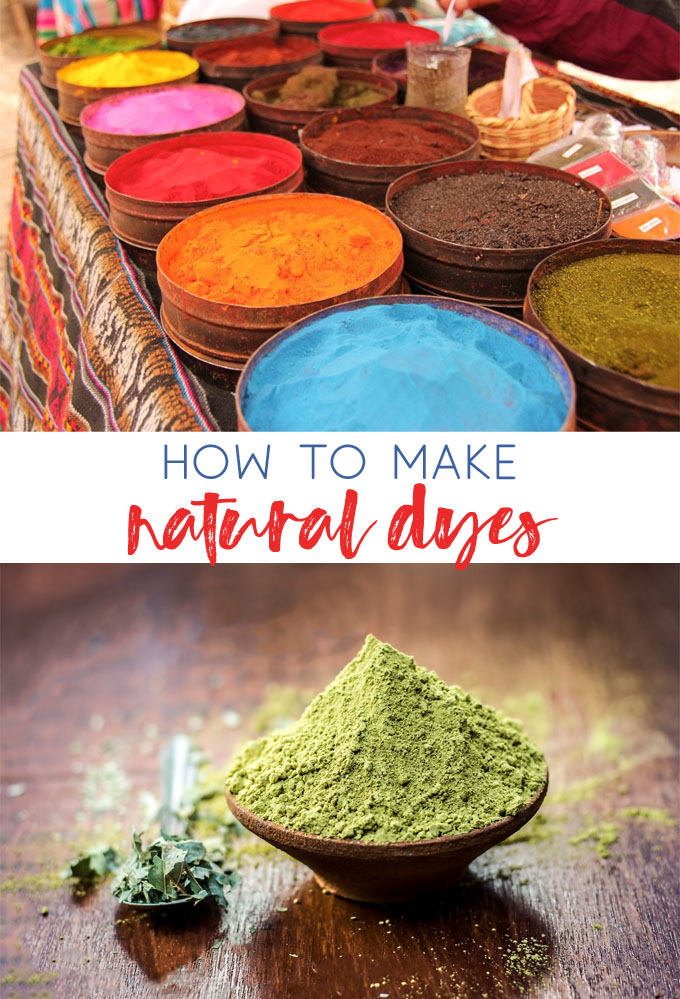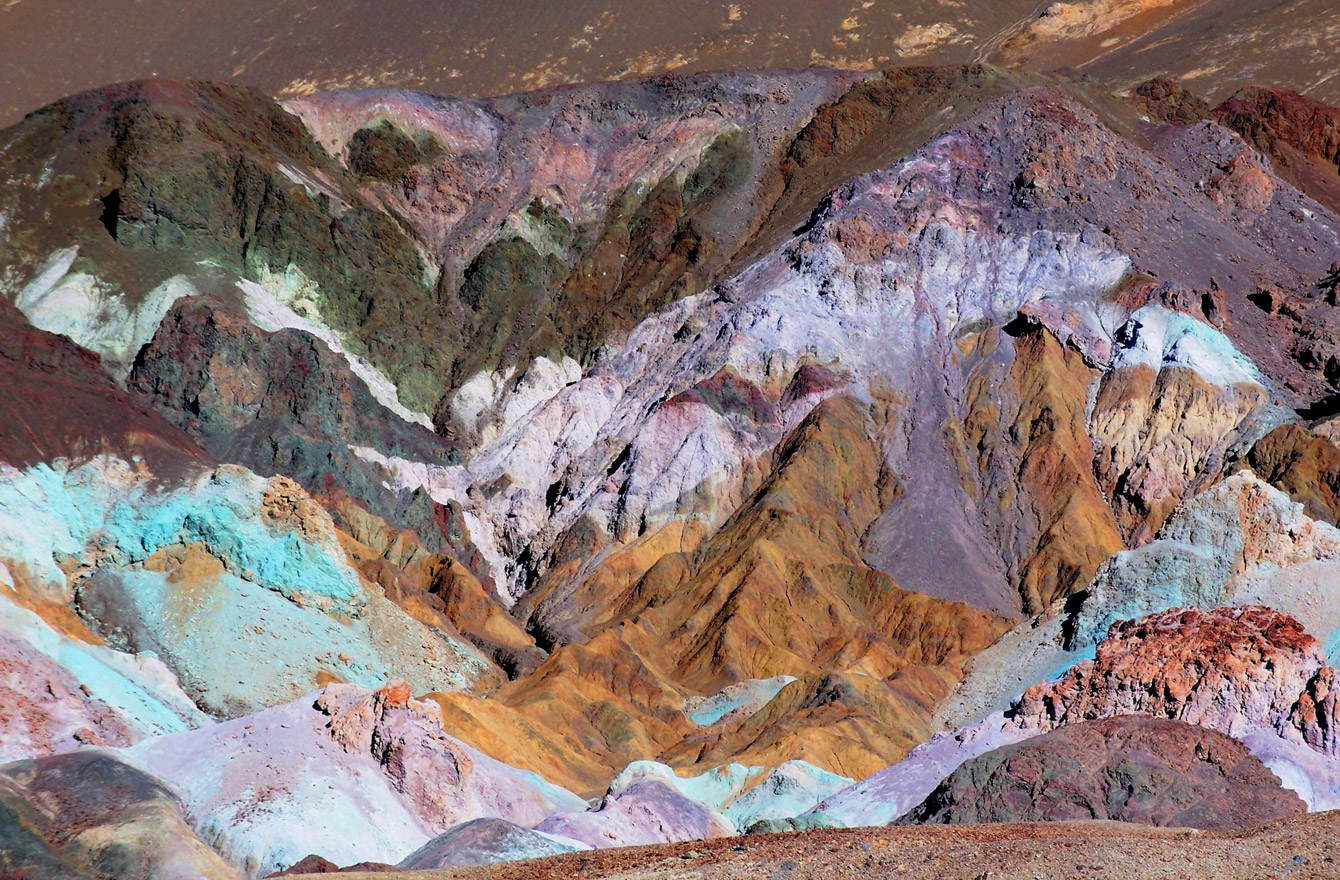Did you know you can create your own basic dyes and paint colors right at home? That’s right!
Basic dyes and pigments can be concocted from plants, fruits, and other natural surroundings, which makes them safer and more environmentally-friendly as well.
This post shares all you need to know to learn how to make pigment!
In fact, natural pigments and basic dyes have been used since prehistoric times.
But not until synthetic and petroleum-based pigments were introduced did they natural pigments stop being the preferred choice of medium.

Invaluable created this fun infographic that highlights some easy, DIY projects using natural pigments.
From wood staining to paining a beautiful landscape, try them out next time you want to create a fun art project that is free of any toxins and chemicals!
Basic Dyes-How to Make Natural Pigments at Home

Natural, earthen pigments have been used since prehistoric times, with the earliest written record of their application dating back to 5000 BC. Civilizations from all over the world have utilized organic material from plants, animals, and minerals to create color they could apply to surfaces to create representational forms.
Each civilization has had a unique method for creating and using natural, basic dyes, and we’ve seen these methods transcend generations from antiquity, to the Renaissance, to contemporary practices today.
Natural pigments continued to be the base for oil paints until the 19th century when synthetic and petroleum-based pigments were introduced. Many artists working today use natural materials as they’re environmentally-friendly and surprisingly easier to manipulate.
Natural pigments are also used in printmaking, spun into paper threads for weaving and stitching, used to produce oil and wax crayons, and are even used in silk painting in Asian art. Below, we explore the possibilities of natural, basic dyes in art, how some of the most famous painters used them in their body of work, and how you can use natural pigments to create your own designs today.
What is a Natural Pigment?
A natural pigment is one that is found in nature that is ground, sifted, washed, and in rarer cases, heated to create a desired hue. Since their inception, natural pigments served many artistic purposes for ancient cultures around the world.
The first paintings, from prehistoric times, were cave paintings applied by brushing, smearing, dabbing, and even spraying techniques. Artists used whatever pigment was available to them through natural resources. This included earth pigments such as red and yellow ochre, charcoal, and white from ground calcite.
Types of Natural Pigments
Natural dyes can be sorted into three categories: natural pigments obtained from plants, natural pigments obtained from animals, and natural pigments obtained from minerals. Many dyes require a mordant, an element that combines with a dye and the fiber so that the dye is absorbed.
These basic dyes are referred to as “adjective dyes.” Those that don’t require mordants are called “substantive dyes.” Common mordants include iron and tin.
Natural Dyes Obtained From Plants

Natural pigments offer tremendous versatility and accessibility; vibrant colors can be made using resources right from your backyard.
Plants, roots, nuts, fruits, vegetables, and flowers of all different types each generate a unique color when applied correctly. Below are some common plants used to generate vibrant pigments:
—Madder: Historically, madder, obtained from the roots of a madder plant, was widely used throughout the 19th century to create ruby reds.
These plants were dug up, washed, dried, and ground into powder. Most fabrics during this time had been dyed with madder.
—Woad: Woad, which is a yellow-flowered European plant of the cabbage family, was another common plant-derived pigment that was used to create blues.
The color came from the leaves that were also dried and ground like madder. They were then made into a paste.
—Indigo: Indigo soon replaced woad because it didn’t require mordant to create the vibrant hue.
—Sumac: Sumac is a small tree whose branches and berries can yield colors from beiges to yellows to reddish pinks to blacks when boiled.
—Beets: Beets, pickled in particular, yield a vibrant pink color that is ideal for dying fabrics.
—Safflower: This thistle-like plant was used on Egyptian textiles to create a yellow and red dye extracted from the petals. It is still used today.
—Blueberries: This popular fruit is used to create a pale blue dye when it’s simmered in water and then strained.
Natural Dyes Obtained From Minerals

Pigments that come from minerals are found in rocks and soil all over the world. Different minerals produce their own unique, often vivid, colors. Many are even roasted to intensify the color. Below are some examples of mineral pigments:
Ochre: Ochre is one of the most common mineral pigments. Widely used in Aboriginal art, ochre is usually a red or yellow that is obtained from ore of iron or ferruginous clay.
Sienna: This is another common mineral-based pigment. It is a form of limonite clay that is derived from ferric oxides to produce a rich, earthy red. It produces darker shades from creams to browns.
Azurite: Azurite is found in many parts of the world in the upper oxidized portions of copper ore deposits. This was one of the most important blue pigments used in Renaissance art.
Cobalt: Discovered in 1802, this pure blue pigment was used by artists like Pierre-Auguste Renoir in the 19th century.
Ultramarine: Ultramarine was obtained from lapis lazuli and commonly used in Europe for jewelry and paint. The expensive blue pigment was artificially manufactured beginning in the 19th century.
Spinels: These hard, crystalline minerals generate colors by exchanging certain ions that heat and combine with other minerals. They’re available in yellow, orange, turquoise, and blue.
Natural Dyes Obtained From Animals

There are fewer examples of dyes obtained from animals than those retrieved from plants and minerals. However, many colors were extracted from insects throughout history. A few of the most prominent examples include:
Cochineal: This red dye comes from Cochineal insects who live on cactus plants.
Pre-Columbian Indians would dry them out in the sun, grind their bodies, and mix with water to produce a red powder. Cochineal is still used in the Canary Islands.
Carmine: The blood from Kermes insects produces Carmine red, which today refers to a broad range of red hues that are slightly purple, but closer to red than crimson.
Tyrian purple: Murex, a predatory sea snail, is used to create Tyrian purple, which was popular in Ancient Rome.
The process involved extracting the dye from thousands of snails and a significant amount of labor, so it was highly valued and even referred to as “royal purple” for this reason.
Basic Dyes Used in Art
Natural pigments were used to create some of the most iconic paintings of art history. Azurite, a carbon mineral, was used in Italian Renaissance painter Raphael’s Madonna and Child Enthroned with Saints. Cadmium red, a mineral pigment, was used to create Henri Matisse’s The Red Studio.
Today, you can draw inspiration from the greats, and use natural pigments for a wide variety of art projects. Once you start to master your skill, experiment with more complex use of the colors.
Artists choose natural pigments over their synthetic counterparts for a variety of reasons. Aside from the environmentally-friendly characteristics of organic matter, a natural pigment is also one of the purest forms of color and its ability to generate a vibrant hue is unparalleled.
From Egyptian antiquities, to iconic Renaissance paintings, to examples in modern art, cultures around the world utilize the capabilities of natural pigments. Draw inspiration from each genre to inspire your own future projects using natural materials.
Thanks for reading all about Basic Dyes-How to Make Natural Pigments at Home. Have a great day!

